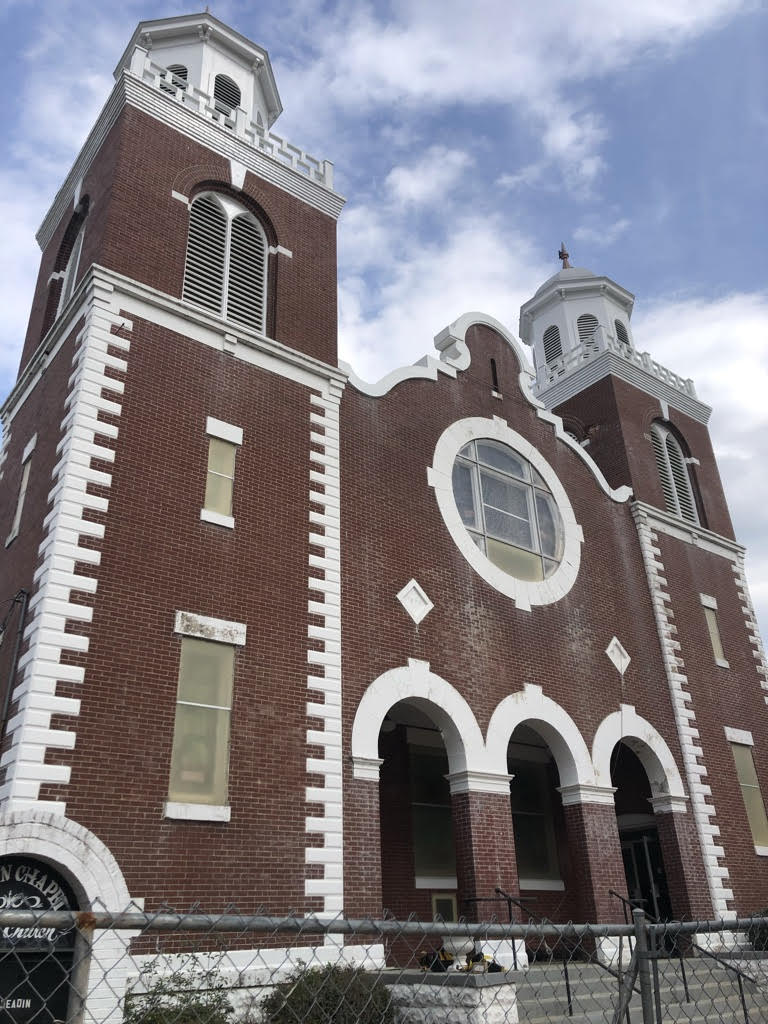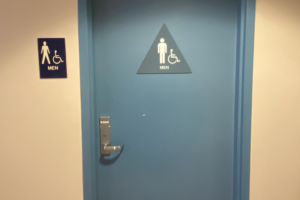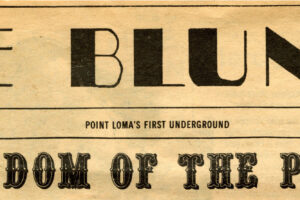The Civil Rights Pilgrimage is a new class this year that includes a pilgrimage through the south over spring break, March third through March ninth. The goal of the class is to immerse students in the rich history of the civil rights movement and connect students with activism that is being done today. During the six-day long pilgrimage, we spent time in Montgomery, Selma, Birmingham, and Atlanta visiting churches, museums, and iconic historical landmarks. Below are some of my journal entries from the trip. Sections in italics were added later, and are clarifying information about some of the places named in the entries.
March 4: Legacy Museum in Montgomery, Alabama
The Legacy Museum was created to educate visitors on the history of slavery, terror, segregation and mass incarceration that Black Americans have been subject to. The Museum has two parts: the main building with educational exhibits and interactive simulations, and across the street is the National Memorial for Peace and Justice. This memorial is also part of the Legacy Museum, and is dedicated to the victims of lynching and racial terror in America.
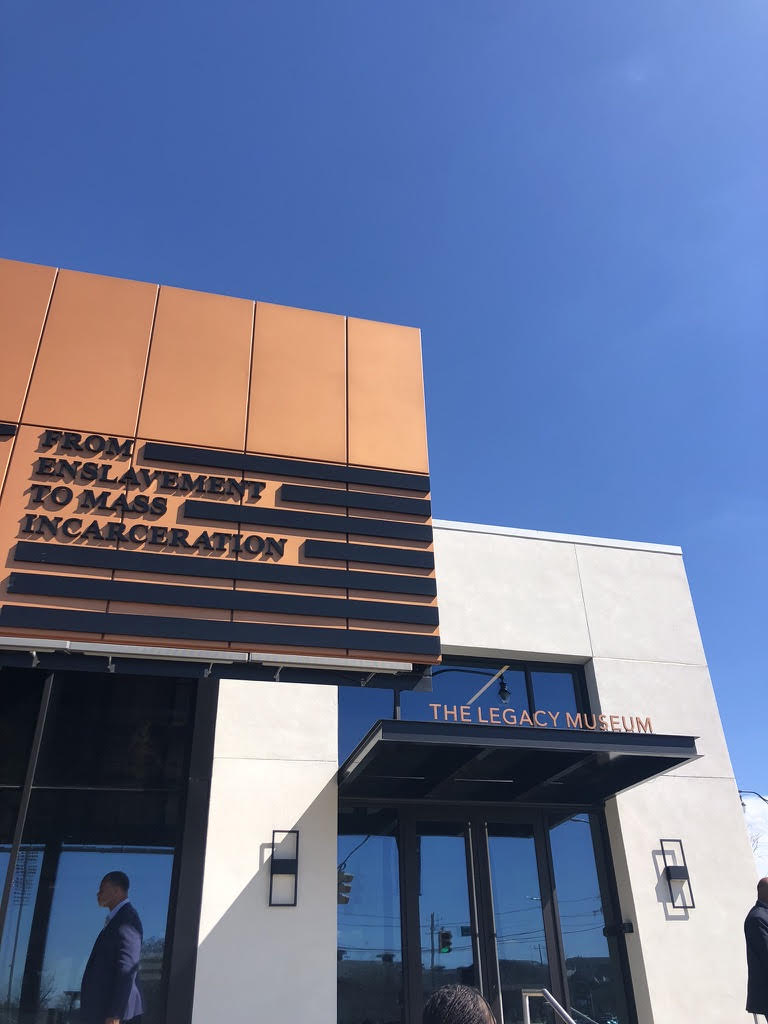
In 1860 Montgomery there were more spaces involved in trafficking enslaved people than churches and hotels. I am standing on a site where enslaved Black people were forced to labor in bondage.
I’m reading letters from people who are in prison for life without parole. One says, “We sometimes forget that the most important part of life is not how we start it, but how we live it and finish it. I want to live my life and finish my life as a good and humble person. But most of all, I want to die in the grace of God.”
Today I learned that 229 Black people were murdered in the Elanie massacre. I’ve never heard of the Elaine massacre. Why? How can we heal from wounds we’ve so carefully covered up?
39 people (unknown names) were murdered in 1917 in Illinois. The birthplace of Abraham Lincoln! Home to Wheaton College, the last stop on the underground railroad! Oh, but we certainly don’t teach this.
12 million kidnapped, 9 million terrorized, 10 million segregated, 8 million incarcerated. But all we teach is that Abe Lincoln abolished slavery. We forget the auctions where families were ripped apart, the newspaper advertisements that informed townspeople when the next lynching would be, we forget the amnesty act that removed all punishment for confederates.
We forget that those who fought to enslave people walked free, making it so Black folks couldn’t marry white folks, lynching the Black men who reported violence against their daughters, and created segregation, “the legalization of white supremacy.”
We forget the bus boycotts and the lynching tree and the 12 million and the literacy tests for voter registration that asked questions like “how many bubbles are in a bar of soap?” to determine if Black citizens should be able to participate in the electing of government officials.
We forget because we don’t want to feel hurt or shame or anger or fear. We forget because we like to say it was our ancestors, and not us.
What about those who cannot forget? Who’s ancestors were lynched and whose children are murdered by police brutality? What about the 400,000 in prison– the slavery of modern-day America? What about life with no parole for crimes they didn’t commit?
When we forget our past, we repeat our history. Lord, have mercy on us all.
March 5: Selma
On March 7, 1965, a group of over 600 marchers led by John Lewis walked across Edmund Pettus Bridge (named after a leader of the KKK) in Selma, AL. The group was advocating for voting rights and planned to walk from Selma to Montgomery. As they crossed the bridge, they found a group of state troopers waiting for them. The state troopers advanced on the crowd with tear gas and beat them with clubs. Approximately 50 people were injured and one person was killed. Images of what would be known as “Bloody Sunday” in Selma shocked the nation, sparking sit-ins, protests and eventually the passing of the 1965 Voting Rights Act.
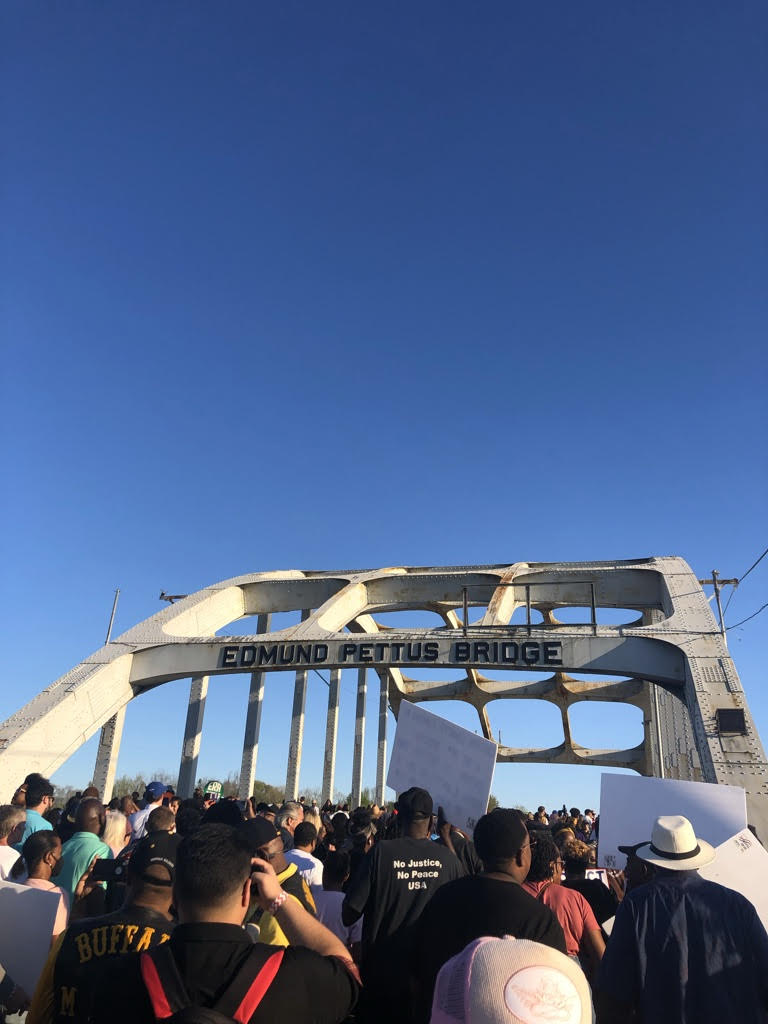
Today I marched with a crowd full of parents, children and grandchildren led by a foot soldier. 58 years of commemoration, of remembering, of consecrating, of fortifying. The pastor this morning said it is sacrilege to remember and be unwilling to give up our own lives. May I bear witness to a movement that started in a church and may I remember the work done, currently happening, and the generations to come in Selma, Alabama. The stones the builders rejected become the cornerstone! Lord– you are alive and well in Selma, may we all bear witness to this truth.
March 6: Selma
Today was a day well spent in Selma: serving, hearing stories and eating the best ribs I have ever had in my life. What a gift it is to learn from so many wonderful, spirit-filled people. Today I am thinking about the voices we listen to and how the world doesn’t listen to Selma. Here, I learned about community organizing and why it works 100% better than federal-level mobilizing. I learned that a 13-year-old marched across that bridge in Selma 58 years ago. He gave me a hug and I looked him in the eye when he told us “don’t let anyone ever tell you that young people can’t make change. I had way less resources than y’all and look what I did at 13.” What a lesson! May I take these things and apply them to PLNU and San Diego. May I invest in community and in the flourishing of LIFE, in the future lives, in the lives to come!
March 7: Montgomery
I’m in a state where statues of confederate soldiers still stand next to places of power. Men who owned slaves and fought for power over Black bodies can be seen from the windows of a building where laws are written. Just a block away sits MLK’s church, and next door to the capitol is the former White House of the Confederacy. A few blocks down is a building dedicated to the “mothers of gynecology”— Black women who were illegally experimented on (and often killed) by a white man. But in front of the capitol building stands a statue dedicated to that man, the so-called “father of gynecology.”
They say history is told by the winners. The Confederate soldiers lost the war, but there are no monuments of union soldiers in front of Alabama’s state capitol. No monuments to the victims of lynching, but a massive one to the fallen soldiers of the Confederacy. There’s a star for where Jefferson Davis stood on the front steps. Segregationists supposedly were defeated, so where is the star for MLK when he stood in front of that building?
March 8: Birmingham
16th Street Baptist Church is located in downtown Birmingham and was an iconic church in the Civil Rights Movement. In 1873 it was established as the first Black baptist church in Birmingham, and for a long time it was the home of many civil rights advocates and leaders. On Sunday, September 22 at 10:22 a.m. the church was bombed by white supremacists, resulting in the death of four young girls attending Sunday school. On that same day two other Black youth were the victims of white supremacy. One boy was killed by a police officer, the other boy killed by a mob of white men. The church is still active today, and is open for tours so people might remember those six Black youth.
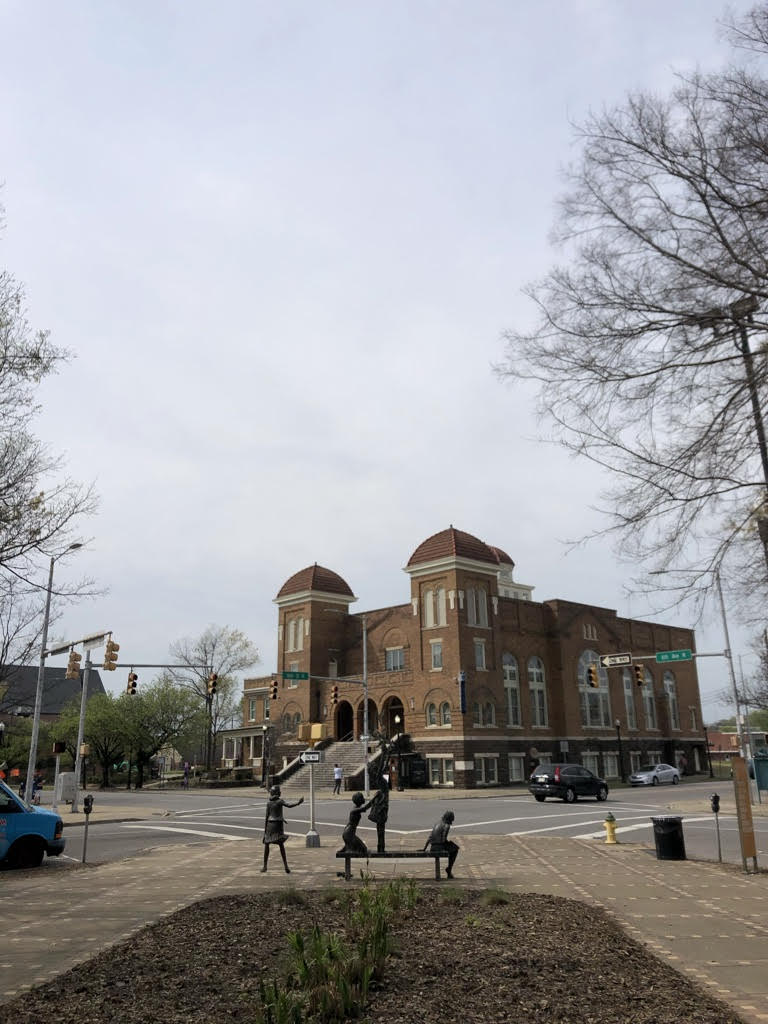
I can’t stop thinking about how in the video we watched at 16th street baptist church, everyone was so shocked that this had happened to children. I know gun violence is not always racially motivated and it happens in schools today, not always churches (although sometimes in places of worship), but at the end of the day children are children. They stopped everything after the bombing of 16th Street Baptist Church, the whole world eventually knew about it. I can’t even remember all of the names of the schools that had shootings this past year. I wonder when I became complacent in the face of such violence?
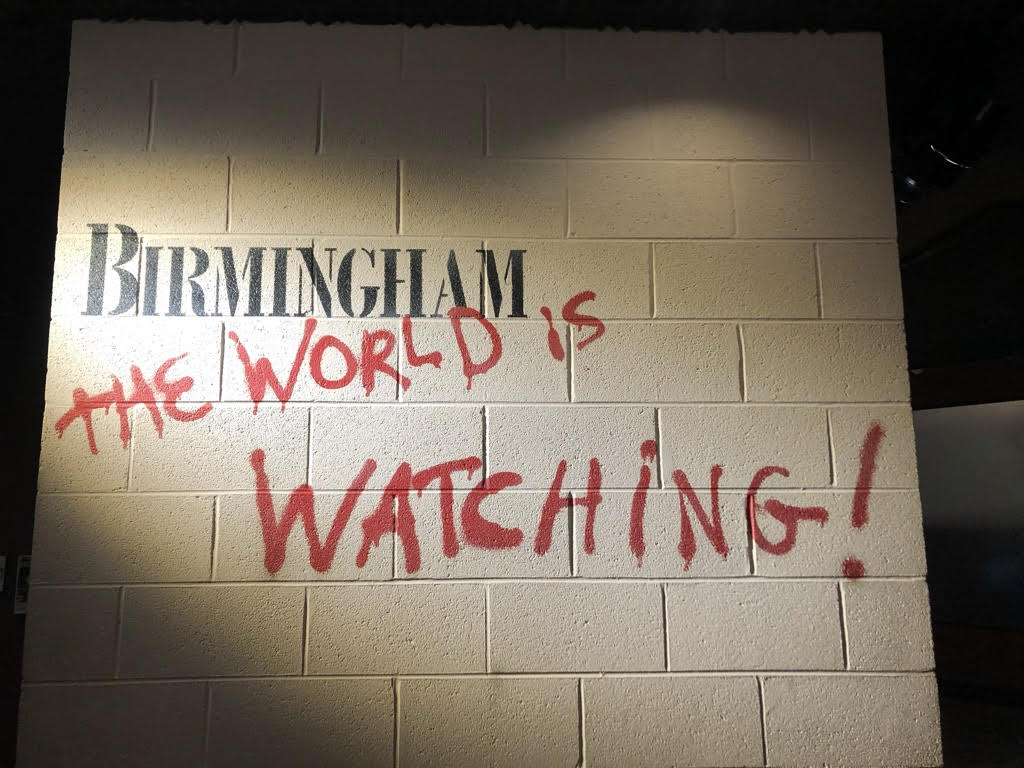
I am also having a hard time understanding reconciliation after today. How does God’s redemptive love apply to those who murder? I do not understand this. I can picture the righteous anger of God at injustice, but I realize now that when I picture this God it is a slightly different image than the Jesus who spent time with the least of these and made them the cornerstone. And yet I proclaim that Jesus is God– that the God of the Old Testament and New Testament are the same. So how does an unchanging God present Godself to both the oppressors and the oppressed? What do I mean when I say that God desires fellowship and redemption and wholeness for all of creation? I see no end for the murders of those four girls except retribution. I don’t know how to worship a God that desires for these people to be in eternal heaven.
March 9: Atlanta
The National Center for Civil and Human Rights is a museum in downtown Atlanta. Their collection includes written work by Dr. King, and exhibits on historical and current movements for civil rights. One exhibit in particular includes an interactive simulation where participants are invited to sit down at a lunch counter similar to the counters that Black activists would do sit-ins at. Participants listen to recordings on headphones of things that would be said to those who did sit-ins in order to get a better understanding of nonviolent protests and the extent to which Black activists were verbally and physically assaulted while doing nonviolent protests.
I have never experienced anything like that lunch counter today– a privilege in itself. It is one thing to have read about; I have done that all my life. But this was pure hatred in the air around me and grief welled up in my bones. This I do not have the answer for– like so many things on this trip. I do not have an answer and I fear there might not be one. What brokenness I witnessed, and because of this I am so much more in awe of God’s power to reconcile and restore. A mystery!
To learn more about the Legacy Museum in Montgomery, visit https://museumandmemorial.eji.org/museum. The Equal Justice Initiative, founded by Brian Stevenson, has created a racial injustice calendar that can be found here. Brain Stevenson is also the author of “Just Mercy”, a book that explores the legacy of mass incarceration and the history of racial injustice in America. Just Mercy was made into a movie in 2019, and can be found on various streaming platforms including Hulu, Amazon Prime, and Apple TV.
Written By: Reyna Huff

